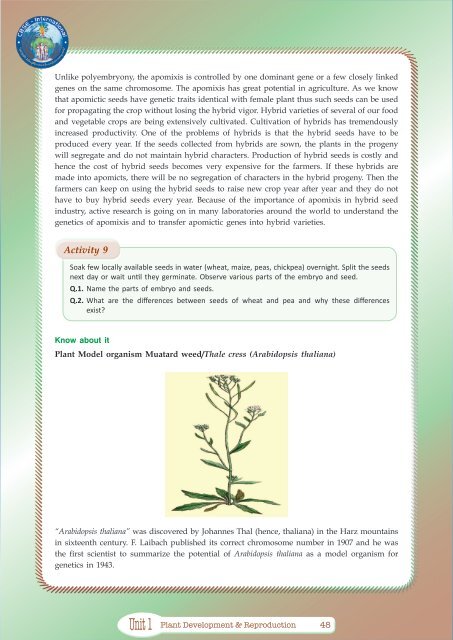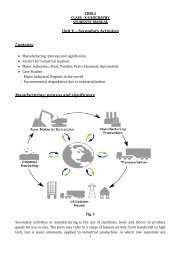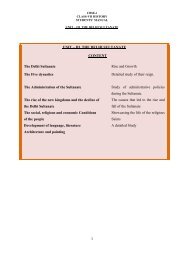PLANT DEVELOPMENT & REPRODUCTION - CBSE International
PLANT DEVELOPMENT & REPRODUCTION - CBSE International
PLANT DEVELOPMENT & REPRODUCTION - CBSE International
Create successful ePaper yourself
Turn your PDF publications into a flip-book with our unique Google optimized e-Paper software.
Unlike polyembryony, the apomixis is controlled by one dominant gene or a few closely linkedgenes on the same chromosome. The apomixis has great potential in agriculture. As we knowthat apomictic seeds have genetic traits identical with female plant thus such seeds can be usedfor propagating the crop without losing the hybrid vigor. Hybrid varieties of several of our foodand vegetable crops are being extensively cultivated. Cultivation of hybrids has tremendouslyincreased productivity. One of the problems of hybrids is that the hybrid seeds have to beproduced every year. If the seeds collected from hybrids are sown, the plants in the progenywill segregate and do not maintain hybrid characters. Production of hybrid seeds is costly andhence the cost of hybrid seeds becomes very expensive for the farmers. If these hybrids aremade into apomicts, there will be no segregation of characters in the hybrid progeny. Then thefarmers can keep on using the hybrid seeds to raise new crop year after year and they do nothave to buy hybrid seeds every year. Because of the importance of apomixis in hybrid seedindustry, active research is going on in many laboratories around the world to understand thegenetics of apomixis and to transfer apomictic genes into hybrid varieties.Activity 9Soak few locally available seeds in water (wheat, maize, peas, chickpea) overnight. Split the seedsnext day or wait until they germinate. Observe various parts of the embryo and seed.Q.1. Name the parts of embryo and seeds.Q.2. What are the differences between seeds of wheat and pea and why these differencesexist?Know about itPlant Model organism Muatard weed/Thale cress (Arabidopsis thaliana)“Arabidopsis thaliana” was discovered by Johannes Thal (hence, thaliana) in the Harz mountainsin sixteenth century. F. Laibach published its correct chromosome number in 1907 and he wasthe first scientist to summarize the potential of Arabidopsis thaliana as a model organism forgenetics in 1943.Unit 1 Plant Development & Reproduction 48








